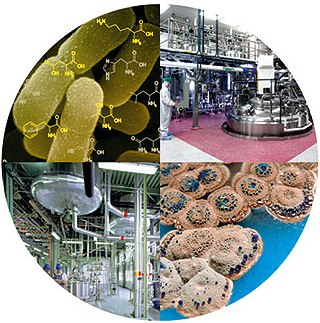Biotechnology
Microorganisms have been used to make a wide variety of products for many thousands of years, but lately this has been called biotechnology. In order to produce products or intermediates, microbes are grown in large vats (fermenters) protected from contamination and changes in pH, temperature, and dissolved oxygen concentration. Industrial fermenters vary in size from a few liters to several thousand liters. Modern biotechnology relies heavily on developments in chemical engineering to regulate and monitor the processes occurring in these fermenters, and this regulation makes the growth of Bacteria or fungi under these conditions somewhat different from that found in ordinary shake flasks. The optimization of fermenters requires a thorough understanding of the kinetics of growth of the organism used in the bioprocess.

Industrial fermenters allow the growth of microorganisms by one of three processes: batch, fed-batch, and continuous fermentation. A batch fermenter is sterilized, inoculated, and allowed to grow before the entire culture volume is harvested. A fed-batch system follows a similar regimen, but instead only some of the culture is har- vested after growth, and fresh medium is added to restart the process. Continuous culture uses a constant in-flow of medium offset by the exit of spent medium, product, and biomass, and is not used so much in the production of products for human consumption because of perceived problems with culture sterility. Most developments in fermentation systems focus on the provision or exclusion of oxygen from the vessel, depending on the process required. The amount of dissolved oxygen in a culture can be increased by a variety of methods, from the simple mechanical stirred vessel to the airlift fermenter.
Biotechnology now plays an important role in many industries, including the food- processing industry, providing both enzymes (e.g. invertase for the manufacture of glucose syrup) and biomolecules (e.g. sodium glutamate).